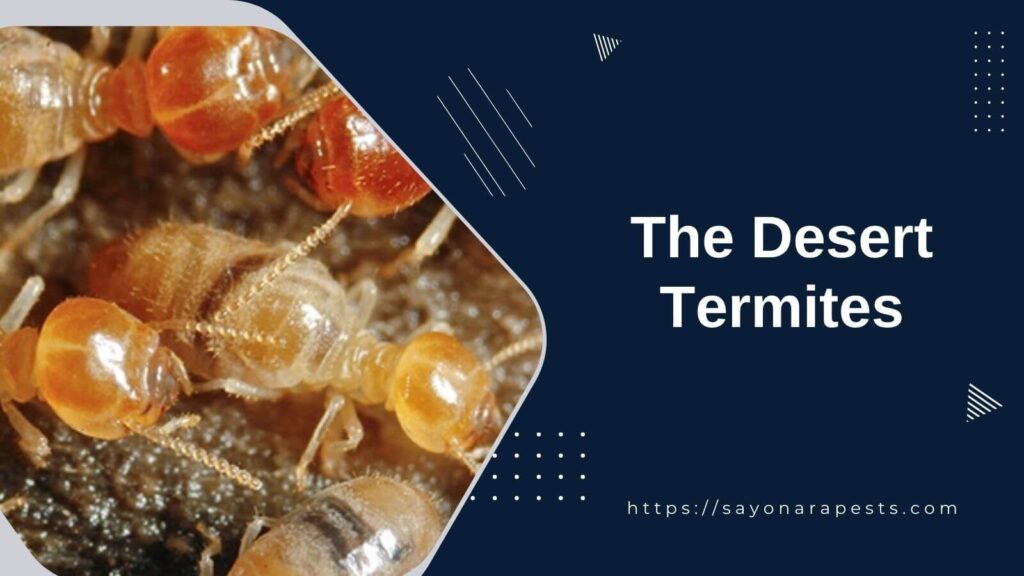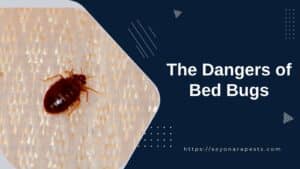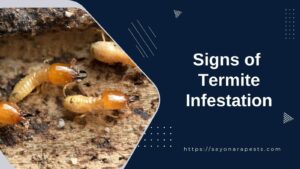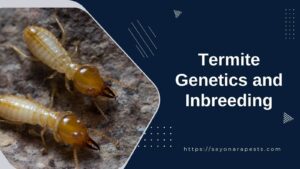The desert termite is an amazing creature that can survive in hot, dry places with few resources. It is able to do this because it is very flexible and resilient.
These tiny desert builders have developed complex strategies and body parts that help them survive and thrive in some of the harshest places on Earth.
In this article, we explore the fascinating world of desert termites by looking at how they have changed, what they do, and how important they are to the environment. Get ready to go on a journey through the complex web of nature’s wonders, where the meaning of survival changes in a big way.
Understanding how desert termites have changed is very important for many reasons. First and foremost, it shows how amazing it is that life can grow and thrive even in the worst places.
Scientists can learn a lot about how adaptation works by figuring out how these hardy insects get around in dry places.
This information could be used in agriculture, architecture, and even space travel. Also, desert termites are very important to the way ecosystems work because they are like ecosystem engineers who shape and change their surroundings.
By understanding how they have changed, we can see how everything is connected in desert ecosystems and appreciate the delicate balance of life in these places that look like they have no life at all.
The goal of this article is to show how fascinating desert termites are and what their adaptations mean for other things. We will look at the structural and physiological changes that allow these insects to live in places with very high temperatures, little water, and few food sources.
We will also talk about how smart they were as engineers by looking at how they built towering mounds that are both architectural marvels and environmental regulators.
By looking at how termite colonies are organized socially and how they work together, we can learn about the delicate balance between individual survival and the success of the group as a whole.
Through this in-depth article, we hope to not only learn more about these amazing creatures but also develop a sense of awe and appreciation for nature’s cleverness, which can be found even in the harshest parts of our planet.
Overview of Desert Termites
Habitat
In the vast, dry landscapes of deserts, where life seems to struggle against the unrelenting forces of nature, there is a remarkable group of creatures that manage to survive against all odds: the desert termites.
These hardy insects have changed and grown over time to be able to live in the harshest conditions. They have carved out a life for themselves in sand and heat.
Their homes can be anywhere from the hot deserts of the Sahara to the harsh dunes of the Mojave, where limited resources and big changes in temperature are always a problem.
Desert termites have learned how to build complicated underground colonies in these harsh environments. Their nests are proof of how good architects they are.
They dig deep into the ground and make a network of chambers and galleries that connect to each other.
This network gives them shelter from the hot sun and a place to store their food. These termite mounds, which rise up like ancient buildings in the middle of a vast desert, show how strong and resourceful these tiny builders are.
Classification
Desert termites are part of the order Isoptera, which is made up of many different kinds of social insects that have been interesting to scientists and nature lovers for hundreds of years.
There are different families of desert termites within the order Isoptera, such as Rhinotermitidae and Termitidae. There are many different kinds of animals in these families that have learned to live well in deserts.
The Desert Subterranean Termite (Heterotermes aureus) and the Death’s Head Termite (Hodotermopsis sjoestedti) are two examples of important termites.
Even though they live in a harsh environment, desert termites have changed their bodies and ways of behaving in ways that help them deal with the challenges of the desert.
Their tough and thick exoskeletons keep them from drying out and from getting too hot. Also, their mouths and digestive systems are designed in a way that helps them break down and digest cellulose, which is the main part of their diet.
Diet
Desert termites eat mostly plant materials that are high in cellulose. But in the harsh desert, where there isn’t much plant life and water is hard to come by, termites have learned to make the most of whatever food they can find.
They are known to eat many different kinds of plants, like dead wood, leaves, and even grasses.
Surprisingly, desert termites have also learned to get water from sources that look dry and uninhabitable. They have special relationships with microorganisms, like bacteria and protozoa, that live in their guts.
These microorganisms help digest cellulose and make enzymes that break down complex carbohydrates into simpler ones. This gives termites access to important nutrients and moisture.
Also, the ways that desert termites save water are very interesting. They close off their underground nests to keep water from evaporating too much.
They also do things like build mud tunnels to get to faraway food sources while avoiding the hot desert sun as much as possible. These changes show how amazing it is that they can live and grow in the harshest desert conditions.
In the end, desert termites are amazing creatures that have mastered the harsh and unforgiving environments of deserts through their amazing adaptations and ways of staying alive.
Their ability to build complex colonies, survive in dry conditions, and make use of limited resources shows how strong and smart nature is.
Scientists continue to learn about adaptation and survival in one of the most difficult places on Earth by studying these interesting insects.
Unique Adaptations of Desert Termites
Desert termites are amazing creatures that live in some of the harshest places on Earth. To survive in these harsh environments, they have developed a wide range of amazing adaptations.
One of the most interesting things about them is how they keep water in their bodies. This helps them deal with the fact that there isn’t much water in these dry places.
These adaptations cover a wide range of things, from the structure of their exoskeletons to the design of their nests to the way they store water and eat.
Anatomy of Exoskeleton
Desert termites’ hard outer shell, or exoskeleton, is a natural engineering marvel. It is finely tuned to deal with the dry conditions they live in.
The termites’ exoskeleton has a special shape that keeps them from losing too much water through breathing.
This helps them keep the water they need inside their bodies. It has a waxy layer on the outside that acts as a barrier and slows the rate at which water evaporates.
Also, microscopic grooves and special hairs on the surface of the exoskeleton create microhabitats that trap moisture close to the termite’s body, making it easier for them to keep water.
Nest Building
Desert termites are unmatched in their ability to build complex nests that help keep moisture in the soil. Their nests are carefully made to control the temperature and humidity levels inside, creating a stable environment that helps them live.
These complex buildings often have a network of tunnels and chambers that help air flow and keep too much water from evaporating. By carefully controlling the airflow in their nests, desert termites can keep the right balance between keeping moisture and keeping the right temperature, protecting themselves from harsh desert conditions.
Water Storage Behavior
One of the most amazing things about desert termites is that they can store water for long periods of time. This lets them survive long droughts.
These clever insects do amazing things to get and keep water in their bodies.
They actively look for water sources, like plant matter or condensation on cool surfaces, and absorb and store this important resource. Desert termites have special organs, like rectal glands, that help them get water back from their waste.
This keeps them from losing too much water through their waste. These termites have learned how to live in a dry environment by managing and saving their own water reserves well.
Feeding Behavior
The way desert termites eat is also a big part of how they keep themselves from drying out. These clever creatures have learned to get food from sources that are very dry, like wood and plant fibers, which have little water content.
By getting their food from these places that don’t seem like good places to eat, termites lower their water needs and don’t have to go far from their nests to find water.
This change helps them save energy and keep from losing water, which is very important in the dry desert ecosystems they live in.
In the end, the unique ways that desert termites have found to survive in their harsh environment show how well they can do even when things are hard.
Through a combination of body parts, buildings, and behaviors, these hardy creatures have developed ways to store and use water effectively.
Desert termites have figured out how to live in some of the driest places on Earth by studying the structure of their exoskeletons, the way they build their nests, how they store water, and how they eat.
Their changes show how amazing nature is and give us clues about how organisms can survive and thrive even in the most difficult situations.
Temperature Regulation Mechanisms
Different organisms, like the amazing Desert Termites, depend on their ability to control their temperature for their survival and ecological success.
These small but hardy creatures have come up with a lot of clever ways to deal with the extreme heat of their dry environments. Desert Termites are a great example of how well animals can control their body temperature.
They do this through a combination of behavioral and physiological changes, as well as by building their nests in the right place.
Their changes in behavior are an interesting part of how Desert Termites control their body temperature. When faced with hot temperatures, these termites do a variety of things to reduce heat stress and keep their bodies at the right temperature.
For example, they dig complicated tunnels and build underground networks that give them a place to hide from the scorching heat of the desert.
By digging deep into the ground, termites take advantage of the cooler soil temperatures, which protects them from extreme heat.
This change in behavior protects them from too much heat and helps them save water, which is a valuable resource in dry areas.
In addition to their amazing ways of living, Desert Termites have also made a lot of changes to their bodies that help them keep their bodies at the right temperature.
One example is that their exocrine glands help them control how much water they lose. These glands make droplets of liquid that evaporate and cool the termites’ bodies.
By releasing these droplets in a planned way, the termites can get rid of extra heat and keep their core temperature within a safe range. This change in how their bodies work shows how cleverly Desert Termites have evolved to deal with their harsh environment.
Also, the way Desert Termites build their nests is a key part of how they keep their bodies at the right temperature. These insects build complex nests in the shape of mounds that are positioned in space in a way that helps them keep the right temperature.
When building the mounds, the termites pay close attention to where the sun will be at different times of the day. By putting the entrances and chambers of their nests in certain places, they can control how much sunlight gets into the structure.
This smart placement lets them make microclimates inside the nest, which protects them from the intense heat while keeping conditions good enough for them to live and have babies.
Desert Termites’ careful nest orientation shows how their instinctive behavior and the environment around them work together in complex ways.
Desert Termites have developed a variety of ways to control their body temperature so they can live in their hot, dry environments.
Their behavior changes, like digging tunnels, their physical changes, like the way their exocrine glands work, and the way they position their nests all help them survive in the harsh desert environment.
These amazing adaptations not only show how well Desert Termites can change, but they also teach us a lot about how complicated it is for organisms to keep their body temperatures stable.
Studying these amazing creatures is a good way to remember how many different kinds of life there are on Earth and how amazing it is how organisms can survive in harsh environments.
Food Sources of Desert Termites
Termites, those mysterious insects that live in dry deserts, have come up with some amazing ways to survive in their hostile surroundings with few resources.
Their ability to get food from different places is a key part of how they stay alive.
These desert-dwelling animals have mastered the art of digesting cellulose, which lets them get essential nutrients from plant parts that most other animals would not be able to eat.
Scientists have learned more about how these hardy insects are able to survive by figuring out how they break down the cellulose in their bodies.
Cellulose Digestion
Their amazing ability to digest cellulose is the key to how they stay alive in the desert. These tiny builders have figured out how to break down the complex polysaccharides that are in plant cell walls.
This lets them get to the energy-rich compounds that are hidden inside. Their digestive system is a marvel of efficiency.
It uses enzymes and microorganisms that live in harmony with each other to break down cellulose into simpler forms that can be easily absorbed.
This complicated interaction between how termites work and how microorganisms help them shows a fascinating symbiotic relationship that makes it easier to get nutrients from cellulose-based foods.
Mutualistic Relationships with Microbes
Inside the complicated digestive tracts of desert termites, a hidden world of microorganisms lives and works together in harmony.
These microorganisms live in special places in the termite’s gut and are essential to the process of breaking down cellulose.
Some bacteria and protozoa have the enzymes needed to break down cellulose molecules into smaller pieces that can be used by both the microbes and the termite.
This relationship between termites and their microbial friends not only makes it possible for them to digest cellulose but also shows how adaptable and mutualistic these hardy desert creatures are.
Effects of Drought on Food Availability:
Even though desert termites have learned to deal with the tough challenges of their dry environments, drought is still a constant threat that makes it hard for them to find food.
When there isn’t enough water, plants can’t grow and make as much food, which makes there less cellulose for termites to eat. This puts these insects in a dangerous situation, forcing them to use different ways to deal with the problem of not having enough food.
Desert termites have an uncanny ability to find and use even the smallest sources of cellulose. This shows how resourceful they are when the environment is very harsh.
Also, these hardy insects have the amazing ability to go into a state of dormancy, where they save energy and slow down their metabolism until conditions are better again.
These changes help desert termites survive long periods of drought and make sure they can keep living even when food is scarce.
Scientists and other people have been amazed by how desert termites can find food in places that don’t seem like good places to live.
Their amazing cellulose digestion systems, which are powered by complex symbiotic relationships with other microbes, unlock the potential of plant materials that were not digestible before.
But the effects of drought on food availability are a big problem for these insects that live in dry places. This forces them to come up with new ways to survive when food is scarce.
The story of desert termites shows how resilient and resourceful life is in the natural world. It also shows the complex web of relationships that keep life going even in the harshest environments.
Comparison of Desert Termites with Other Termites
Termites are fascinating creatures that have done amazing things to adapt to their environments. When you compare desert termites to those that live in other places, like forests or grasslands, you can see that they have changed in a number of important ways.
These differences can be seen in how desert termites keep their bodies from drying out, how they keep their bodies at the right temperature, and how they organize their social lives.
Since there isn’t much water in dry areas, desert termites have to work hard to keep their moisture levels up.
In contrast to their counterparts in more humid environments, desert termites have made complex systems to keep water in their colonies and keep as little as possible from escaping.
These clever insects build complex tunnel networks deep in the ground. They often tap into underground water sources to make sure they have a steady supply of this valuable resource.
Also, their exoskeletons have special structures that stop water vapor from moving through them. This helps them keep a delicate balance between the amount of moisture inside and outside their bodies.
Desert termites and their counterparts in other places are also different in how they control their body temperature. In the scorching heat of the desert, it’s hard for these hardy creatures to keep their colonies at the right temperature.
Desert termites have changed in many ways to deal with the extreme heat, such as by building their mounds in a unique way. These mounds, which are made of a mix of soil and organic materials, help to control the temperature in a natural way.
By changing the size and shape of these mounds, termites can control the temperature inside the colony. During the day, the mounds protect the colony from the scorching heat, and at night, they keep the colony warm.
Social organization is one of the most important parts of termite societies, but there are differences between desert termites and their counterparts in other places. Desert termites tend to live in smaller groups than their cousins who live in forests or grasslands.
This is because there aren’t as many resources in arid areas, so desert termites have to be more careful about how big their colonies get.
The social structure of these smaller desert colonies is very complicated. There is a clear division of labor, and different castes are in charge of different tasks, like hunting, defending, and having babies.
This smart way of splitting up jobs helps the colony survive and thrive in the harsh desert environment.
When you look at how desert termites and other termites adapt to their environments, you can see some interesting differences.
Desert termites have gotten very good at surviving in dry places. This is true of everything from how they save water to how they keep their bodies at the right temperature to how they organize their social lives.
Exploring these differences teaches us a lot about the amazing diversity and adaptability of the termite species. It also shows us the amazing natural wonders and evolutionary processes that shape life on Earth.
Examples of Other Termites
Subterranean Termites
Subterranean termites, which are part of the Rhinotermitidae family, are very complicated and interesting creatures that live in a specific ecological niche.
These termites are known for their amazing ability to build huge underground colonies with complicated tunnel systems that help them find food and stay alive. In terms of where they like to live and what they eat, they are very different from desert termites.
Subterranean termites, unlike desert termites, need a constant source of water to live. They are often found in Dampwood or soil. Because they need water, they tend to set up their colonies near water sources.
This makes them a common threat to homes and other structures made of wood. Subterranean termites have a caste system in their colonies. There are workers, soldiers, and reproductive termites, and each has a very important job in keeping the colony running.
Dampwood Termites
Dampwood termites, as their name suggests, like to live in places where the wood is moist. These termites, which are in the family Termopsidae, have special features that help them live and grow in damp, rotting wood, like dead trees or logs that have been left out in the rain.
Desert termites have adapted to live in dry environments, but Dampwood termites need a steady source of water to keep from drying out.
These termites have special enzymes and microorganisms in their guts that help them break down cellulose, the main part of the wood, so they can get food from where they live.
When compared to other termite species, Dampwood termites are known for being bigger, with some reaching up to an inch in length.
Their presence in homes or businesses can be a sign of structural problems since they tend to live in wood that is already weak from water damage or decay.
Drywood Termites
Drywood Termites, which are part of the family Kalotermitidae, are very adaptable insects that have learned to live in dry places. This is different from desert termites, which only live in dry places and thrive there.
Drywood Termites are different from other species of termites because they do and look different. Subterranean termites build complex networks of tunnels, but Drywood Termites build their nests right in the wood they eat, so they don’t need to build large underground networks.
These termites are especially troublesome because they can live in and damage furniture, floorboards, and even the framing inside buildings made of wood.
They are good at getting water out of the wood they eat, which lets them live in dry places without needing to find other sources of water.
Drywood Termites are hard to find because they don’t need to touch the ground and can set up their colonies in hidden parts of a building.
Grass-Feeding Termites
Grass-eating termites, which are also called macrotermitine termites, have a unique preference for eating grass and other plant materials.
The Termitidae family, which includes these termites, is an important part of many ecosystems because it helps break down plant matter and move nutrients around.
Grass-feeding termites have adapted to live in places with lots of plants, like savannas and grasslands. This is different from desert termites, which have learned to get water from dry places.
Their digestive systems are designed to break down cellulose quickly, so they can get the nutrients they need from the fibrous plant matter they eat.
Grass-eating termites build big, complicated mounds that can act as complex ecosystems and house many different kinds of organisms, like fungi and bacteria. These mounds also protect and keep temperature and humidity in balance.
Human Impacts on Desert Termites
Human actions have greatly upset the delicate balance of desert ecosystems, which has had big effects on the number and behavior of desert termites.
The destruction of their habitat, which is mostly caused by urbanization and agricultural expansion, has had a big effect on these hardy insects.
As the number of people grows, huge areas of desert that used to be untouched are turned into sprawling cities and farms, leaving termites with little space to live.
Termites lose their homes and food sources when their natural habitat is destroyed. This forces them to change or die.
Urbanization is a big problem for desert termites because it means clearing out plants and building buildings, roads, and other infrastructure. These physical changes cause termites to leave their nests and look for food in new places, which are often not as good.
The increased amount of concrete and asphalt in urban areas also contributes to the “heat island effect,” which changes the temperature and humidity patterns that termites need to survive. Because of this, the overall quality of termites’ homes has gone down a lot.
In the same way, the growth of agriculture in desert areas has turned natural ecosystems into farmland, cutting into termite habitats even more. The delicate balance of desert ecosystems is upset by the heavy use of machinery, pesticides, and irrigation in agriculture.
Termite populations are directly affected by the removal of plants and changes to the soil structure since termites eat organic matter and build their nests in stable soil.
Pesticides are used a lot in farming, which makes termites even more vulnerable. These chemicals can kill termites or mess up their ability to reproduce and act normally.
Climate change, which is mostly caused by human actions, is another big problem for desert termites. Rising temperatures and changes in how it rains have a big effect on where termites live.
Desert ecosystems are already very harsh, but they are getting worse as temperatures rise and rain patterns become more unpredictable.
Termites depend on certain temperatures and levels of moisture to build their nests and look for food, so these changes directly affect their ability to stay alive. Extreme heat and long-lasting droughts can cause termite colonies to dry out and make it harder for them to find food.
The use of pesticides in desert areas to get rid of agricultural pests has an unintended effect on termite populations.
These chemicals can directly hurt termites and kill them or hurt their bodies. Also, using pesticides with a wide range of effects often has the unintended effect of hurting organisms in the ecosystem that were not the intended targets.
These secondary effects could upset the delicate balance of the ecosystem and make it harder for desert termites to live and change how they act.
Even though people’s actions cause a lot of problems, it is very important to protect desert termites through conservation efforts. Both economically and ecologically, termites are a very important part of desert ecosystems.
From an economic point of view, termites help make soil, which is important for farming and preventing desertification. Their actions help move nutrients around and break down organic matter, which makes the soil more fertile.
From an ecological point of view, termites are a very important food source for many animals, such as birds, reptiles, and small mammals.
Their underground tunnels also help water get into the ground and stay there. This keeps the soil from washing away and helps plants grow.
Desert termites should be protected by preserving and restoring their natural habitat, making sure there are places for them to nest and food sources.
Sustainable land management practices, like reducing the use of pesticides and promoting agroecological methods, can reduce the negative effects of agriculture on termite populations.
Also, it is important for policymakers, farmers, and the general public to know how important termites are to desert ecosystems and work to protect them.
By recognizing the economic and environmental benefits of termites, we can try to find a balance between human progress and the environment.
In conclusion, learning about how desert termites have changed over time teaches us a lot about how these tough creatures are able to survive in harsh, dry places.
In this article, we’ve looked at the different ways that desert termites keep themselves from drying out, keep their bodies at the right temperature, and find food.
By looking at their anatomy, the way they build their nests, how they store water, and how they eat, we have learned more about how these termites deal with the lack of water in their environment.
We have also learned about the interesting ways that desert termites control their body temperature through both behavioral and physiological changes, as well as how they position their nests to increase their chances of survival.
These changes show how closely termites and their environment are connected. They also show how they are able to keep their colonies in good shape even when the temperature changes a lot.
We have also looked into the unique foods that desert termites eat, such as their amazing ability to digest cellulose and their relationships with microorganisms.
We have also looked at how drought affects the availability of food, which shows how hard it is for these termites to find food when there isn’t much around.
By comparing desert termites to other termite species, like subterranean termites, Dampwood termites, Drywood Termites, and grass-feeding termites, we were able to show how desert termites have adapted to thrive in their specific ecological niche.
These comparisons have shown how different termites are and how important it is to know how each species adapts to its environment in order to survive and thrive.
Even so, people’s actions pose big problems for desert termites and their homes.
Desert termites are in danger because urbanization and farming are destroying their homes and food sources, and climate change is making their homes and food sources worse.
Also, using pesticides has a direct effect on termites and upsets the delicate balance of the ecosystem, where termites play a key role.
Termites are good for the economy and the environment, so protecting them is important to keep the delicate balance of desert ecosystems.
The economic benefits of termites, like their role in nutrient cycling, soil aeration, and making useful things like wood and compost, show how important it is to protect their homes.
In addition, as keystone species, they are important to the health and functioning of the ecosystem as a whole and can’t be overlooked.
Based on what we learned from this exploration, future research should focus on learning more about how desert termites have evolved.
Scientists will learn a lot about how they evolved by studying their genes, how their bodies react, and how they act. This will help them come up with ways to protect them and keep them from going extinct.
In conclusion, the ways desert termites have changed are a great example of how strong and smart nature is.
Understanding these changes not only helps us learn more about the natural world but also shows how important it is to protect these interesting animals and the ecosystems they live in.
We can make sure that desert termites and the complex web of life in which they play a key role will be around for a long time by recognizing their importance and taking steps to reduce the risks they face.











